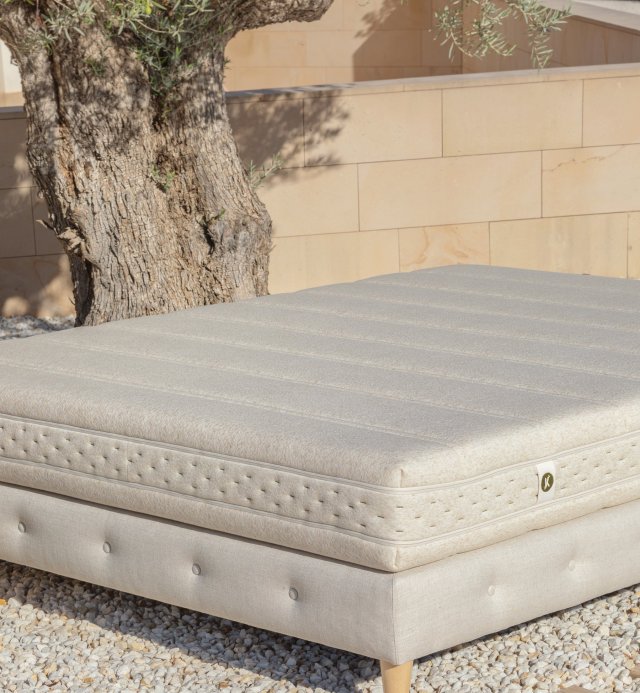There's nothing more pleasant than lying in a clean bed with nice sheets. Stained or wrinkled bedding can affect the quality of your sleep. But there are hidden substances that can cause much more serious damage to your health, the chemicals in some mattresses and synthetic bedding.
What chemicals are in our bedding?
Many chemicals are present in our mattresses, comforters, pillows and bed linen. They are supposed to make our life easier and preserve our health, but they are dangerous if we spend 8 hours a night in contact with them...
The most dangerous substances contained in bedding are fungicides and insecticides, added to prevent the development of molds in contact with humidity as well as the proliferation of dust mites and bacteria (which love the warm and humid environment inside the mattress).
Formaldehyde is used in some textiles to maintain their shape and prevent wrinkling.
Chromium and brominated flame retardants, perfluorinated compounds, triclosan are present in most foam and spring mattresses. But that's not all, they are also present in some comforters and pillows because these chemicals are used to fight against dust mites, bacteria, odors, stains ...
All these chemicals are not harmless to human health, they contain neurotoxic and carcinogenic substances. They also contain mutagenic substances (which can cause genetic mutations), and endocrine disruptors (acting on the growth of children, hormonal development and fertility). All these substances mixed together can, in the long term, make us sick, cause respiratory problems and sleep disorders.
Using a bed sheet allows to limit the passage of substances to the human body. Choose a breathable polyurethane mattress cover and not a PVC one (which contains phthalates).
Choose a mattress and bed linen made of natural materials
While many mattresses contain many harmful substances, the same is unfortunately true for synthetic bed linen. First of all, it is important to remember that polyester is made from petroleum. In contact with our skin, polyester can cause irritation, allergies and excessive sweating. Polyester textiles can also have serious consequences on the fertility of men and women.
Polyester is more difficult to dye than natural textiles, so it requires the use of disperse dyes, caustic soda and sodium hydrosulfite, a substance that becomes highly toxic when it comes into contact with water. The dyeing of synthetic textiles is highly energy intensive because it is done at high temperatures and the fumes are very toxic for humans and the environment.
This chemically treated bed linen will stay in direct contact with our skin during the whole time we sleep. Moreover, heat and perspiration will accelerate the migration process of toxic micro-particles towards the skin.
To ensure a healthier sleep, the main step is to choose a natural mattress, a mattress composed of natural fibers carefully selected to offer a perfect air circulation, a good evacuation of humidity in order to naturally limit the proliferation of bacteria and dust mites.
When choosing a mattress, it is important to read the composition carefully, and even if the list of harmful substances is not displayed, it is important to check that the mattress has not undergone any chemical treatment: neither insecticide treatment, nor antibacterial, nor anti-mould, nor fire treatment.
The same applies to bed linen, always prefer bed linen made of natural materials and preferably organic. They contain far fewer harmful substances than conventional cotton sheets. Linen and hemp sheets are also recommended. Choose textiles with the OEKO-TEX® label, which ensures that they do not contain any substances that are harmful to human health.
For reasons of hygiene and safety, it is recommended to buy a new mattress for the arrival of a newborn. Second-hand mattresses can be contaminated by mites, fleas and bedbugs....
In any case, it is recommended to air your bedroom and your children's bedroom daily.
















Leave a comment